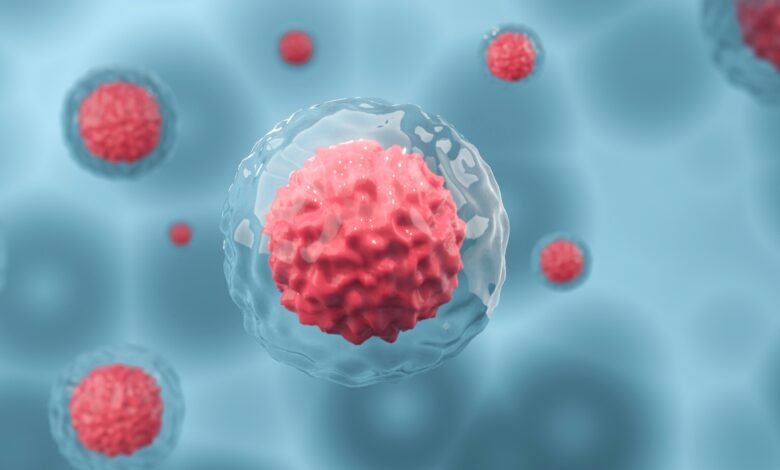
Infertility is a complex issue that affects millions of couples worldwide, and female infertility, in particular, poses a significant challenge for many. Various factors contribute to female infertility, including age, hormonal imbalances, structural abnormalities, and underlying medical conditions. In recent years, the field of reproductive medicine has witnessed remarkable advancements, and one promising avenue that has emerged is the use of stem cell treatment to address female infertility issues. This article explores the role of stem cell therapy in overcoming the challenges associated with female infertility, delving into the science behind it, potential applications, and the ethical considerations that accompany this innovative approach.
Understanding Female Infertility
Before delving into the role of stem cell treatment, it is crucial to understand the factors that contribute to female infertility. Infertility is generally defined as the inability to conceive after a year of regular, unprotected intercourse. Female infertility can result from various causes, such as:
1. Age-related Decline in Ovarian Function
A woman’s fertility is closely tied to the health and function of her ovaries. As women age, the quantity and quality of their eggs decline, making conception more challenging.
2. Hormonal Imbalances
Hormonal imbalances, including irregularities in the levels of estrogen, progesterone, and follicle-stimulating hormone (FSH), can disrupt the ovulation process and affect fertility.
3. Structural Abnormalities
Issues such as polycystic ovary syndrome (PCOS), uterine fibroids, and blocked fallopian tubes can interfere with the normal reproductive processes, hindering the chances of conception.
4. Endometriosis
Endometriosis, a condition where tissue similar to the lining of the uterus grows outside the uterus, can cause inflammation, scarring, and adhesions, impacting fertility.
The Promise of Stem Cell Therapy
Stem cells are undifferentiated cells with the remarkable ability to develop into various cell types within the body. This unique characteristic has led scientists to explore their potential in regenerative medicine, including applications in reproductive health. Stem cell therapy holds promise for addressing female infertility challenges through several mechanisms:
1. Ovarian Regeneration
One of the primary applications of stem cell therapy in female infertility is the regeneration of ovarian tissue. Ovarian stem cells, also known as oogonial stem cells, have been identified in the ovaries of adult women. These cells have the potential to differentiate into mature ova (eggs), offering a novel approach to replenishing the ovarian reserve.
1.1 Isolation and Culture of Ovarian Stem Cells
Researchers have made significant strides in isolating and culturing ovarian stem cells in vitro. This process involves extracting a small sample of ovarian tissue, isolating the stem cells, and cultivating them under controlled conditions. The cultured stem cells can then be reintroduced into the patient’s ovaries, aiming to restore or enhance fertility.
1.2 Challenges in Ovarian Regeneration
While the concept of ovarian regeneration through stem cells is promising, challenges remain. Ensuring the functionality and safety of the regenerated ova, as well as addressing ethical concerns surrounding the manipulation of reproductive cells, are critical aspects that researchers continue to investigate.
2. Hormonal Regulation
Stem cells also show potential in regulating hormonal imbalances that contribute to infertility. By differentiating into specialized cells, stem cells could help restore normal hormonal function in women experiencing irregularities in their menstrual cycles and ovulation.
2.1 Targeting the Endocrine System
Stem cell therapy may involve targeting the endocrine system, including the pituitary gland and the ovaries, to regulate the secretion of key hormones involved in the menstrual and reproductive cycles. This approach aims to create a more conducive environment for successful conception.
2.2 Personalized Hormone Therapy
The ability to customize stem cell-based hormone therapy based on an individual’s specific hormonal profile holds the potential to optimize treatment outcomes. Tailoring interventions to address the unique needs of each patient is a key area of focus in stem cell research for infertility.
3. Uterine Repair and Regeneration
In addition to addressing ovarian factors, stem cell therapy offers opportunities for uterine repair and regeneration. Structural abnormalities in the uterus, such as scarring or thinning of the uterine lining, can impede embryo implantation and contribute to recurrent pregnancy loss.
3.1 Endometrial Stem Cells
Endometrial stem cells, found in the lining of the uterus, play a crucial role in the cyclic regeneration of the endometrium during each menstrual cycle. Harnessing the regenerative potential of these cells could lead to therapies aimed at repairing and strengthening the uterine lining.
3.2 Enhancing Implantation Success
Stem cell interventions targeting the endometrium may enhance the receptivity of the uterus to embryo implantation, addressing a common challenge in cases of unexplained infertility or recurrent implantation failure.
Clinical Progress and Challenges
While the potential of stem cell therapy in overcoming female infertility is exciting, it is essential to acknowledge the current status of clinical research and the challenges that researchers face in translating these findings into widely available treatments.
1. Clinical Trials and Evidence
Several clinical trials are underway to assess the safety and efficacy of stem cell treatments for female infertility. Preliminary results are encouraging, with some studies reporting improvements in ovarian function, hormonal balance, and pregnancy rates. However, the long-term effects and broader applicability of these interventions require further investigation.
1.1 Successful Cases
Notable success stories have emerged from early trials, showcasing instances where women who previously faced challenges conceiving experienced successful pregnancies after undergoing stem cell treatments. These cases fuel optimism but also underscore the need for rigorous scientific scrutiny.
1.2 Heterogeneity of Results
The heterogeneity of results across different studies highlights the complexity of female infertility and the need for personalized approaches. Factors such as the age of the patient, the specific cause of infertility, and the type of stem cells used can influence outcomes.
2. Ethical Considerations
The ethical dimensions of using stem cells in reproductive medicine cannot be overlooked. Manipulating reproductive cells, creating embryos for research purposes, and intervening in the natural processes of reproduction raise ethical questions that demand careful consideration.
2.1 Creating Life in the Lab
The generation of ova through stem cell manipulation raises ethical concerns related to the creation of life in laboratory settings. Ensuring the ethical use of reproductive technologies and safeguarding the well-being of any potential offspring are paramount considerations.
2.2 Informed Consent and Autonomy
The involvement of individuals in stem cell research for infertility necessitates robust informed consent processes. Patients should be fully informed about the experimental nature of these treatments, potential risks, and uncertainties, allowing them to make autonomous decisions about their reproductive health.
3. Regulatory Landscape
As the field of stem cell therapy for female infertility evolves, regulatory frameworks must keep pace to ensure the safety and ethical conduct of research and clinical applications. Clear guidelines for the development, testing, and implementation of stem cell-based interventions are essential for protecting patients and advancing the field responsibly.
3.1 FDA Approval Process
The U.S. Food and Drug Administration (FDA) and similar regulatory bodies worldwide play a pivotal role in evaluating the safety and efficacy of novel medical treatments. Stem cell therapies for female infertility will likely undergo rigorous scrutiny before receiving regulatory approval for widespread use.
3.2 Global Collaboration and Standards
International collaboration and the establishment of global standards for the ethical and regulatory aspects of stem cell research in reproductive medicine are crucial. Harmonizing practices can help prevent the proliferation of unproven treatments and ensure that advancements in the field benefit patients responsibly.
Future Directions and Considerations
The evolving landscape of stem cell therapy for female infertility opens up new possibilities and prompts researchers to explore innovative avenues. Several key areas warrant attention as the field progresses:
1. Advancements in Stem Cell Banking
The establishment of stem cell banks dedicated to reproductive tissues holds promise for preserving fertility and addressing age-related decline. Women may choose to bank ovarian or endometrial stem cells at a younger age, providing a potential resource for future fertility interventions.
1.1 Fertility Preservation Strategies
Stem cell banking aligns with broader fertility preservation strategies, allowing individuals to proactively address potential fertility challenges before they arise. This approach is particularly relevant for women undergoing medical treatments that may impact their reproductive health.
2. Integration of Artificial Intelligence
The integration of artificial intelligence (AI) in stem cell research may enhance the predictive modeling of treatment outcomes and facilitate personalized interventions. AI algorithms can analyze vast datasets to identify patterns and optimize treatment plans based on individual patient characteristics.
2.1 Predictive Analytics in Reproductive Medicine
Applying predictive analytics to reproductive medicine involves assessing factors such as genetic predispositions, hormonal profiles, and lifestyle variables to predict the likelihood of treatment success. This data-driven approach could revolutionize the field and improve the precision of infertility treatments.
3. Patient Advocacy and Education
Empowering patients with knowledge about stem cell treatments for infertility is essential for informed decision-making. Patient advocacy groups can play a crucial role in disseminating accurate information, fostering dialogue, and advocating for ethical and responsible practices in the field.
3.1 Inclusive Dialogue
Ensuring that discussions about stem cell therapy include diverse perspectives is crucial. Addressing concerns and incorporating feedback from different communities can contribute to the development of ethical guidelines that reflect a broad range of values and beliefs.
Conclusion
The role of stem cell treatment in overcoming female infertility challenges represents a groundbreaking frontier in reproductive medicine. While significant strides have been made in understanding the potential applications of stem cells in addressing ovarian, hormonal, and uterine factors, much work remains to be done. Clinical research, ethical considerations, and regulatory frameworks will shape the trajectory of stem cell therapy for female infertility.
As the field continues to evolve, collaboration among scientists, clinicians, policymakers, and patient advocates is paramount. Open dialogue, transparency, and a commitment to advancing reproductive health responsibly will contribute to unlocking the full potential of stem cell treatments for female infertility. Ultimately, the journey toward overcoming female infertility challenges with stem cell therapy is a dynamic and multidimensional endeavor that holds the promise of transforming lives and reshaping the landscape of reproductive medicine.



